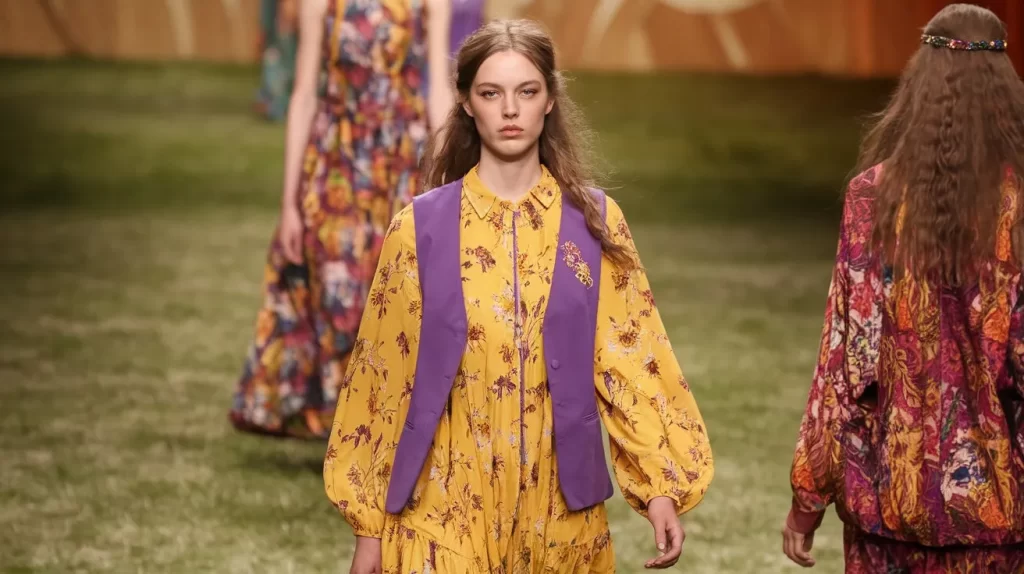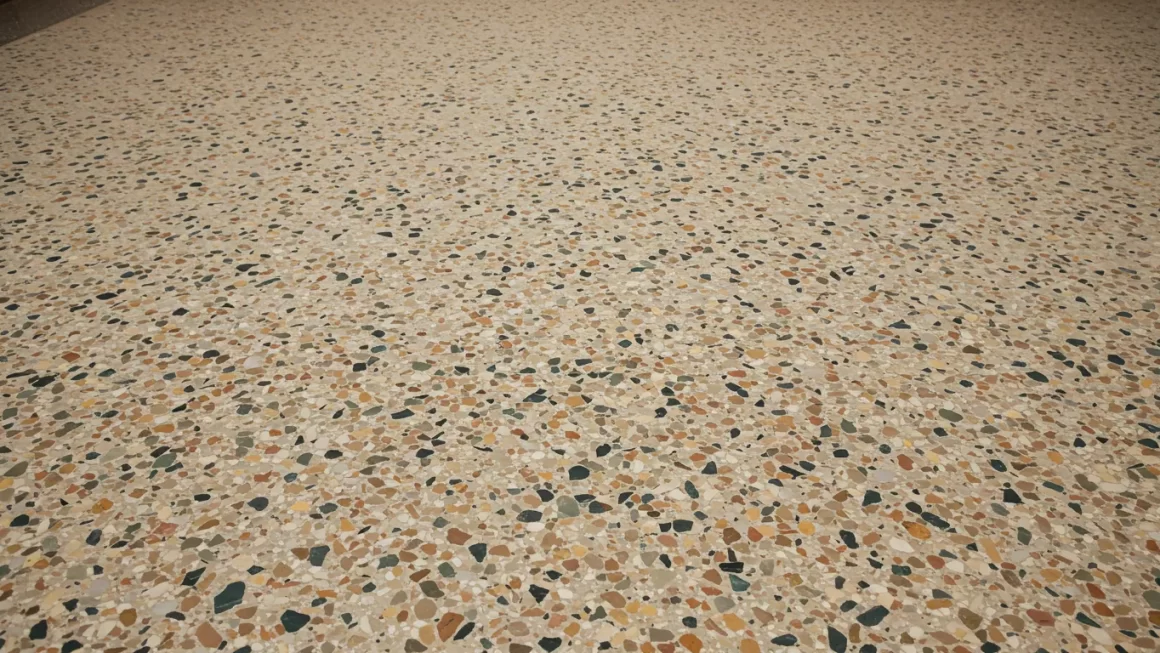Table of Contents
The 60s fashion hippie style is more than just a trend—it is a powerful expression of freedom, individuality, and rebellion. During a decade marked by social change and cultural shifts, the hippie movement brought a new wave of fashion that challenged traditional norms. This article will take you through the vibrant and eclectic world of the 60s fashion hippie style, exploring its essential elements and how it continues to influence fashion today.
The Birth of the 60’s Fashion Hippie Style

The 60’s fashion hippie style emerged as a reaction to the conservative and structured fashion of the 1950s. Influenced by the counterculture movement, young people sought to break free from societal constraints, and their clothing choices reflected this desire for liberation.
The hippie style was influenced by various factors, including the bohemian lifestyle, Eastern spirituality, and a rejection of materialism. The fashion of the ’60s became a canvas for self-expression, with each outfit telling a story of individuality and nonconformity.
The Birth of 1960s Hippie Fashion
1960s hippie fashion was not just about clothes; it was a statement of freedom and individuality that changed the world of style forever. The hippie movement began as a response to societal norms and conformist ideals, with the hippie ethos focused on peace and Love. 1960s counterculture emerged with a colourful and bold sense of fashion choices that embodied symbols of peace and rebellion against traditional societal norms. The hippie look included:
- Bell-bottom jeans.
- Tie-dye shirts.
- Maxi dresses.
- Flared pants.
- Hippie accessories like flower crowns and headbands.
The late 1960s saw the rise of hippie clothing that was comfortable and practical, often using natural fabrics like cotton and natural dyes, giving off a free-spirited and bohemian vibe. Many fashion designers in the mainstream fashion industry eventually took inspiration from these expressive styles, blending hippie culture into their creations.
Woodstock and the Hippie Influence on Fashion History
The Woodstock music festival was a landmark moment that showcased the groovy hippie outfits and brought many hippies together, with hippies in the height and beyond displaying hippie influence on fashion history. Woodstock celebrated the anti-war movement and embodied flower power with peace symbols and relaxed garments like fringe vests, bell-bottom trousers, and hippie tie-dye shirts.
Men wore blouses and sweaters, and women wore flowing maxi skirts, sweaters, and suede trouser styles, all topped with a peace sign accessory. 70s costumes had their roots here, too, carrying forward that ’60s hippie vibe with drawstring pants, flare styles, and yippie accents.
The habight-ashbury district during the summer of Love became the epicentre of hippie movement energy, where fashion choices were more than garments—they were a form of protest against the Vietnam war, a reflection of civil rights movements, and a showcase of an alternative way of living, all while promoting environmentalism and social and political awareness.
Key Elements of the 60’s Fashion Hippie Style
To truly understand the 60’s fashion hippie style, it’s essential to explore the key elements that defined this iconic look. These elements shaped the era’s fashion and left a lasting impact on the fashion world.
Flowing and Comfortable Fabrics
One of the most distinctive features of the 60’s fashion hippie style is flowing and comfortable fabrics. This emphasis on comfort was a direct response to previous decades’ rigid and structured clothing. Fabrics like cotton, linen, and lightweight wool became staples in the hippie wardrobe. These materials allowed for freedom of movement and contributed to the relaxed, laid-back vibe that defined the style.
Bold Patterns and Vibrant Colors
Color played a significant role in the 60’s fashion hippie style. Bright, bold patterns such as tie-dye, paisley, and florals were everywhere. These patterns often carried symbolic meanings, representing peace, love, and a connection to nature. The use of vibrant colors like orange, pink, and green starkly contrasted the muted tones of the 1950s, symbolizing a break from tradition and a celebration of life.
Bohemian Accessories
Accessories were an integral part of the 60’s fashion hippie style, adding an extra layer of personality to each outfit. Beaded necklaces, leather headbands, oversized sunglasses, and fringe bags were just a few of the accessories that became synonymous with the hippie look. These accessories were often handmade or sourced from different cultures, reflecting the hippie movement’s embrace of global influences and a more natural way of life.
The Influence of Music and Culture on 60’s Fashion Hippie Style
Music and culture were pivotal in shaping the 60’s fashion hippie style. The rise of rock and roll, folk music, and psychedelic bands like The Beatles, Janis Joplin, and The Grateful Dead provided the soundtrack to the era and influenced fashion choices.
Woodstock: A Fashion Revolution
The Woodstock Festival of 1969 is often seen as the pinnacle of the 60’s fashion hippie style. The event celebrated peace, love, and music, bringing together thousands of young people who embraced the hippie lifestyle. The fashion on display at Woodstock epitomized the hippie style, with attendees wearing everything from tie-dye shirts and bell-bottoms to flowing maxi dresses and floral crowns. Woodstock wasn’t just a music festival—it was a fashion revolution that showcased the power of clothing as a form of self-expression.
The Counterculture Movement
The counterculture movement of the ’60s was a driving force behind the hippie style. Young people challenged the status quo, protested against war, and advocated for civil rights. Their fashion choices reflected these ideals, with the 60’s fashion hippie style becoming a symbol of resistance and a desire for change. The movement’s emphasis on peace, love, and harmony was mirrored in the clothing, which often featured symbols like the peace sign and flowers, further cementing the connection between fashion and cultural values.
The Enduring Legacy of 60’s Fashion Hippie Style
While the ’60s may be long gone, the influence of the fashion hippie style continues to be felt in modern fashion. Designers and fashion enthusiasts continue to draw inspiration from the bold, free-spirited look that defined the decade.
Modern Interpretations of the Hippie Style
Today, elements of the 60’s fashion hippie style can be seen in various fashion trends. Bohemian fashion, also known as “boho,” draws heavily from the hippie style with its flowing fabrics, earthy tones, and eclectic accessories. Music festivals like Coachella have also become modern-day platforms for showcasing hippie-inspired fashion, where attendees often channel the spirit of the 60’s with their outfits.
Sustainability and the Hippie Influence
The 60’s fashion hippie style also paved the way for a more sustainable approach to fashion. The hippie movement’s emphasis on handmade, recycled, and natural materials has influenced today’s growing interest in sustainably and ethically. Many people now embrace second-hand shopping, DIY clothing, and eco-friendly fabrics, much like the hippies of the ’60s who sought to live in harmony with the earth.
Also Read: Alternative Emo Style 2000s: Rediscover the Dark Fashion Revolution
Embracing the 60’s Fashion Hippie Style Today

The 60’s fashion hippie style is a timeless expression of freedom, creativity, and individuality. From its roots in the counterculture movement to its lasting impact on modern fashion, this style remains a powerful symbol of self-expression and rebellion against the norm. By understanding the key elements that define the 1960s hippie style—flowing fabrics, bold patterns, and meaningful accessories—you can appreciate the cultural significance of this era’s fashion.
Whether you’re looking to incorporate a bit of hippie flair into your wardrobe or want to learn more about this iconic style, the 1960s hippie style offers endless inspiration.
So, the next time you wonder about the fashion of the 1960s, remember the bold and free-spirited look that defined a generation and continues to influence fashion today.




